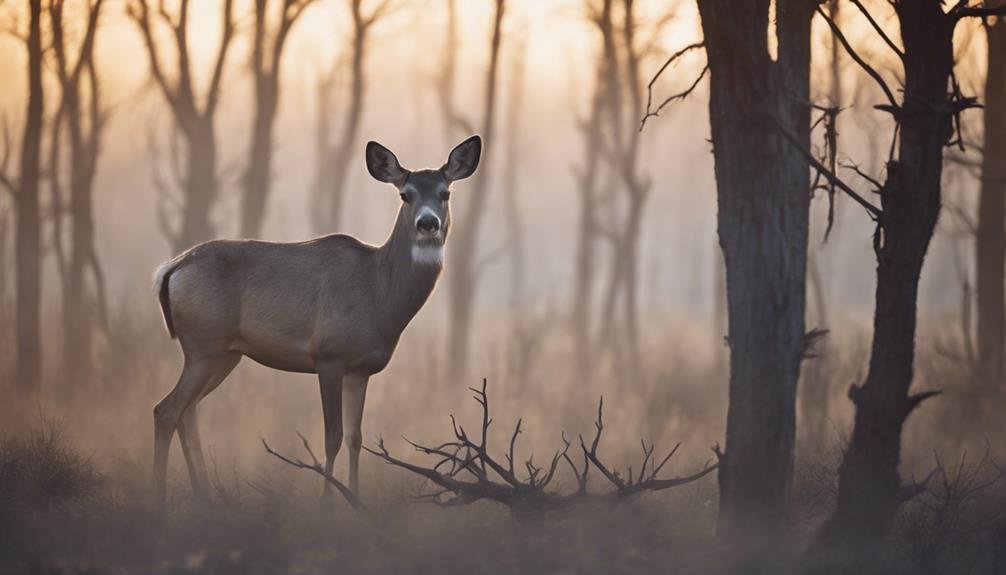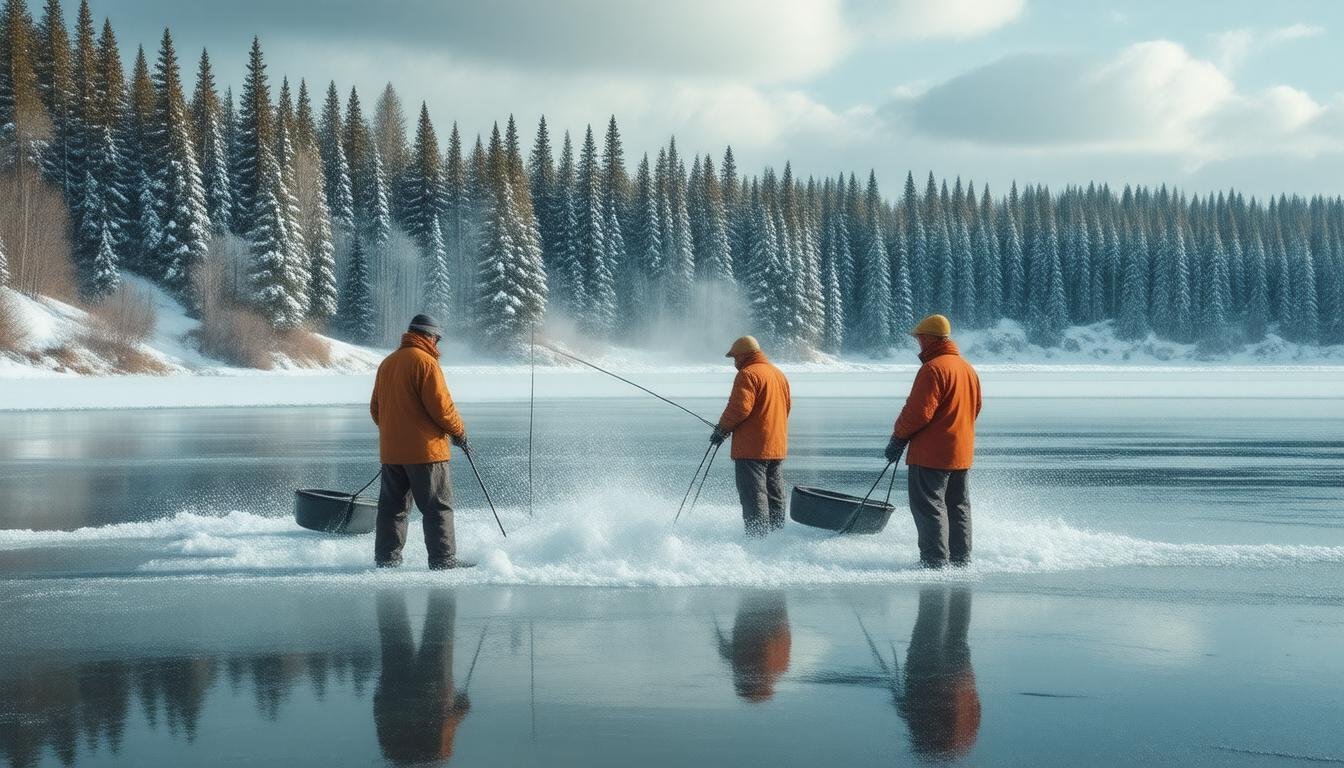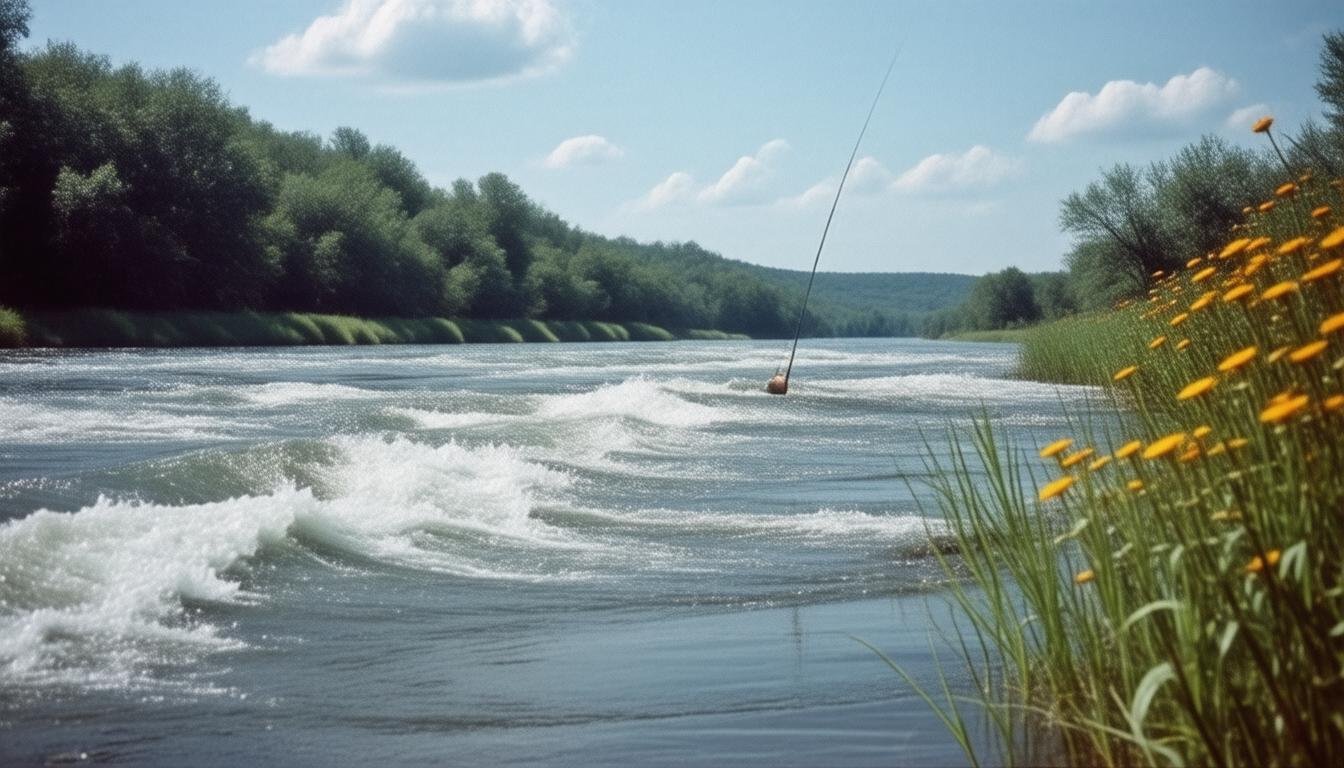Mule deer populations are facing significant threats, with regional fluctuations and declines observed across the Western United States and Canada. Habitat deterioration, disease, and human-induced impacts contribute to the decline. Understanding the complex interplay between these factors is vital for developing effective conservation strategies. By examining migration patterns, social structures, and historical context, researchers can better comprehend the dynamics driving population fluctuations. As researchers and wildlife agencies work to address these challenges, continued exploration of the complex issues surrounding mule deer populations is essential for developing successful conservation efforts, and the path forward will be shaped by a deeper understanding of these intricacies.
Key Takeaways
- Mule deer populations fluctuate across the Western United States and Canada, with regional variations in numbers and local declines.
- Habitat deterioration, human migration, and urbanization contribute to population decline, reducing deer habitat and increasing human-deer conflicts.
- Climate shifts, disease, and predation also impact mule deer populations, exacerbating their decline and necessitating conservation efforts.
- Conservation strategies focus on restoring habitats, controlling disease outbreaks, refining harvest guidelines, and addressing environmental factors affecting mule deer.
- Researchers and wildlife agencies work to maximize mule deer populations through conservation efforts, acknowledging room for growth and the need for continued research.
Mule Deer Population Trends
Approximately 4 million mule deer, including over 500,000 blacktails, inhabit the Western United States and Canada, with populations experiencing fluctuations rather than exhibiting a uniform trend of decline. Despite this, deer migration patterns and social structures remain essential to understanding population dynamics. Mule deer are social animals, often forming small groups, and their migration patterns are influenced by factors such as food availability, habitat quality, and weather conditions. Deer social structures, including dominance hierarchies and maternal bonds, also play a significant role in shaping population trends. By examining these factors, researchers can better understand the complex dynamics driving mule deer population fluctuations, ultimately informing effective conservation efforts.
Regional Variations in Numbers
While mule deer populations fluctuate across the Western United States and Canada, regional variations in numbers are pronounced, with some areas experiencing declines while others report stable or increasing populations. Western disparities in mule deer populations are evident, with Colorado reporting a large post-hunt herd estimate, while Oregon's population declined sharply following harsh winters. Utah's population has decreased, whereas Wyoming's has declined by 42% since 2000. In contrast, British Columbia's mule deer populations are stable. Local fluctuations are also observed, with eastern parts of some states experiencing declines. These regional variations highlight the complexity of mule deer population dynamics, underscoring the need for localized conservation efforts and management strategies.
Factors Affecting Population Fluctuations
What drives the fluctuations in mule deer populations, and how do various factors interact to shape their dynamics? Climate shifts, human migration, and other environmental factors contribute to the fluctuations in mule deer populations. These factors can have a profound impact on the deer's habitat, food supply, and overall well-being.
- Climate shifts can alter the availability of food and water, leading to malnutrition and increased mortality rates.
- Human migration and urbanization can lead to habitat fragmentation, reducing the deer's habitat and increasing human-deer conflicts.
- Habitat deterioration and disturbances, such as wildfires and invasive species, can further reduce the deer's habitat and food sources.
- Disease and predation can also impact mule deer populations, particularly in areas with high predator densities.
Habitat Deterioration and Disturbances
Habitat deterioration and disturbances, such as wildfires, invasive species, and human activities, play a significant role in shaping mule deer populations by altering the availability and quality of their habitats.
| Habitat Deterioration | Impact on Mule Deer |
|---|---|
| Wildfires | Loss of native vegetation, increased risk of invasive species |
| Invasive species | Decreased food quality, altered habitat structure |
| Human activity | Land fragmentation, reduced habitat connectivity |
| Drought | Reduced forage quality, increased competition for resources |
| Climate change | Shifts in vegetation composition, altered migration patterns |
Human activity, such as land fragmentation, has led to the degradation of mule deer habitats, reducing the available space for deer to roam and forage. This, combined with climate change, has resulted in altered vegetation composition and shifts in migration patterns, further exacerbating the decline of mule deer populations.
Historical Context of Mule Deer
Mule deer populations have undergone significant fluctuations over the past century, with historical events and management practices influencing their numbers and distribution. Early settlement and hunting practices have played a significant role in shaping the current state of mule deer populations.
- Mule deer populations peaked in the late 1940s to early 1960s, an era considered the gold standard for hunting.
- Deer herds started booming in the 1920s and 30s as forage and browse flourished while hunting was reined in and predators were aggressively controlled.
- Mule deer benefited from disturbed habitats, prospering from widespread logging of vast forests and wildfire suppression and cattle grazing in grasslands.
- The Mule Deer Working Group offers over 30 two-page Fact Sheets on everything from predators to hybridization.
Conservation Efforts and Research
Researchers and wildlife agencies are working to maximize mule deer populations, acknowledging room for growth, through conservation efforts focused on addressing habitat, disease, predators, harvest guidelines, and environmental conditions affecting mule deer. Genetic analysis is being used to identify corridors for wildlife migration and habitat connectivity. Conservation efforts also prioritize restoring habitats, controlling disease outbreaks, and refining harvest guidelines. Additionally, researchers are exploring the role of environmental conditions, such as climate change, on mule deer populations.
| Conservation Effort | Focus Area | Goal |
|---|---|---|
| Genetic Analysis | Wildlife Corridors | Identify habitat connectivity |
| Habitat Restoration | Ecosystem Health | Enhance habitat quality |
| Disease Control | Health Management | Reduce disease outbreaks |
Addressing Decline Causes and Solutions
By pinpointing the underlying causes of decline, conservation efforts can effectively target and mitigate the factors contributing to the downward trend in mule deer populations. This requires an in-depth understanding of the complex interplay between human behavior, habitat degradation, and environmental factors.
- Identifying and protecting wildlife corridors is essential, as they provide essential connectivity for mule deer migration and dispersal.
- Implementing sustainable land-use practices can help reduce habitat fragmentation and degradation.
- Addressing human behavior, such as reducing human-deer conflicts and promoting coexistence, is imperative for mule deer conservation.
- Restoring degraded habitats and promoting ecosystem resilience can help mitigate the impacts of climate change and disease on mule deer populations.
Disease and Predation Impacts
Habitat-related disease outbreaks and predation pressures, often intertwined with environmental and human-induced factors, substantially impact mule deer populations, exacerbating their decline. Disease ecology plays a vital role in understanding the dynamics of disease transmission and its impact on population dynamics. For instance, diseases such as chronic wasting disease (CWD) and epizootic hemorrhagic disease (EHD) have significant effects on mule deer populations.
| Disease | Transmission | Impact |
|---|---|---|
| CWD | Direct contact, indirect contact, and environmental contamination | Reduced population growth rates, increased mortality |
| EHD | Vector-borne | High mortality rates, especially among fawns |
| Pneumonia | Bacterial infection | Increased mortality, reduced population growth rates |
| Brucellosis | Direct contact, contaminated food and water | Reduced fertility, increased mortality |
Predator behavior, particularly from coyotes, mountain lions, and wolves, also contributes to mule deer decline. Understanding the complex interactions between disease ecology and predator behavior is essential for developing effective conservation strategies.
Environmental Conditions and Harvest
Fluctuations in environmental conditions, such as temperature, precipitation, and vegetation dynamics, profoundly influence mule deer populations, while harvest guidelines and management practices also play a pivotal role in shaping population trends. Climate resilience is vital for mule deer, as they adapt to changing environmental conditions. Sustainable harvest practices are essential to maintain healthy populations, guaranteeing that hunting regulations align with ecological principles. Effective management involves balancing deer numbers with habitat capacity, while also considering the interplay between deer and their environment.
- Environmental conditions, such as drought and extreme weather events, impact mule deer populations.
- Harvest guidelines and management practices influence population trends and habitat quality.
- Climate resilience is vital for maintaining healthy mule deer populations.
- Sustainable harvest practices guarantee the long-term viability of mule deer populations.
Managing Mule Deer Populations
Effective management of mule deer populations requires a multifaceted approach that balances deer numbers with habitat capacity, while also accounting for the complex interplay between deer and their environment. This involves understanding deer migration patterns and population dynamics to maintain sustainable populations. Population dynamics are influenced by factors such as habitat, disease, predators, and environmental conditions. Managing mule deer populations involves monitoring population trends, adjusting harvest guidelines, and implementing conservation efforts to address habitat deterioration and other factors affecting deer populations. By adopting a holistic approach, wildlife agencies and researchers can work together to maximize mule deer populations while maintaining a balance with their environment. This balanced approach is vital for the long-term sustainability of mule deer populations.
Hope for Mule Deer Recovery
Researchers and conservationists alike are pinning their hopes on a multifaceted approach to mule deer recovery, one that acknowledges the intricate interplay between deer populations and their environment. This approach recognizes the importance of preserving and restoring habitats, including wildlife refuges, to support genetic diversity and promote healthy populations.
- Habitat restoration efforts focus on reestablishing native vegetation and reducing invasive species.
- Wildlife refuges provide a safe haven for deer to thrive, free from human disturbance and predation.
- Genetic diversity is essential for adapting to changing environmental conditions and maintaining a strong immune system.
- Collaborative conservation efforts among state and federal agencies, non-profit organizations, and private landowners are essential for successful recovery.
Future Outlook for Mule Deer
Approximately 4 million mule deer inhabit the Western United States and Canada, with a future outlook that hinges on the interplay of various environmental and anthropogenic factors. Climate resilience is essential, as changing precipitation patterns and temperature fluctuations affect habitat quality and deer migration patterns. Genetic adaptation will also play a pivotal role, as deer populations need to adapt to shifting environmental conditions. Conservation efforts should focus on preserving and restoring habitats, promoting connectivity, and mitigating human impacts. By understanding the complex interplay of factors influencing mule deer populations, we can develop effective management strategies to safeguard the long-term sustainability of these iconic species.
Frequently Asked Questions
Can Mule Deer Adapt to Urbanization and Human Development?
Mule deer can adapt to urbanization and human development by utilizing habitat corridors and mitigating fragmentation, allowing for connectivity and gene flow, thereby enhancing population resilience and promoting long-term sustainability.
How Does Climate Change Affect Mule Deer Migration Patterns?
Significantly, 42% of Wyoming's mule deer population has declined since 2000. Climate change affects mule deer migration patterns through warmer temperatures, altering vegetation growth and habitat quality, exacerbating habitat fragmentation, and disrupting traditional migration routes and stopovers.
Are There Any Successful Mule Deer Reintroduction Programs?
Successful mule deer reintroduction programs often involve habitat restoration, ensuring suitable environments for released animals, and maintaining genetic diversity through careful species selection, thereby enhancing population viability and long-term sustainability.
Can Hunting Regulations Be Adjusted to Help Mule Deer Populations?
"Fantastical thinking aside, hunting regulations can be adjusted to aid mule deer populations through license reform and harvest limits, ensuring sustainable hunting practices that conserve populations, rather than exacerbating declines."
Are There Any Natural Predators That Help Control Mule Deer Numbers?
Mountain lions and coyotes are primary natural predators influencing mule deer populations, with coyote behavior adapting to deer behavior, and predator dynamics revealing complex interactions affecting deer numbers.
Conclusion
In summary, mule deer populations, like a delicate ecosystem, are intricate and influenced by multiple factors. While regional variations and fluctuations exist, conservation efforts and research collaborations offer a glimmer of hope for the species' long-term sustainability. By addressing habitat deterioration, disease, and environmental conditions, the trajectory of mule deer populations can be positively impacted, paving the way for a more stable future.









